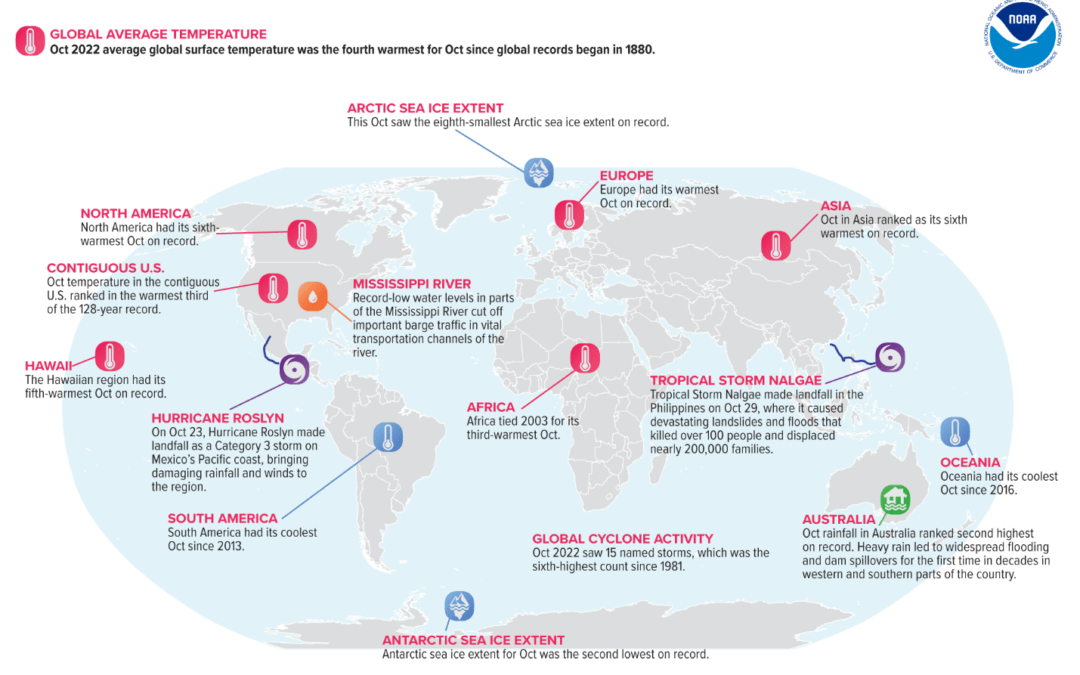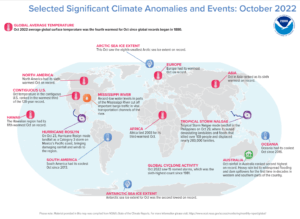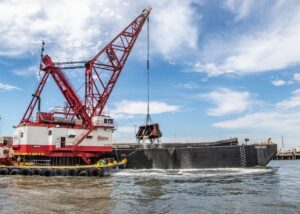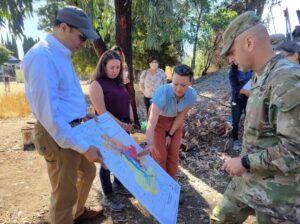BY STAS MARGARONIS, RBTUS
The “Storms Flooding and Sea Level Defense 2022” conference, produced by the Propeller Club of Northern California and the Society of American Military Engineers (SAME), heard that coastal protections will cost for: 1) Louisiana $50 billion; and 2) for Texas $34 billion.
In one instance, the cost of storm surge barriers to protect Texas’ Galveston Bay rose from $12 billion in 2019 to $17 billion in 2022.
On October 11, 2022, the U.S. Army Corps of Engineers (USACE), New Orleans District began construction of an underwater sill, across the bed of the Mississippi River channel to prevent further upriver progression of salt water from the Gulf of Mexico. Fresh water in Palquemines Parish, South of New Orleans, was threatened.[1]
The cost for coastal protections in Texas may go higher if Congress does not appropriate funding right away, according to Kelly Burks-Copes, Chief, Program Support Branch, U.S. Army Corps of Engineers, Galveston District.
Other states will also be seeking federal funding for coastal protection projects and may also experience accelerated costs if Congress delays funding.
The Storms Flooding & Sea Level Defense 2022 conference took place via Zoom on November 9th, 2022.
The conference sponsors included: Towill, Fugro, Wilshire Consulting, Port of Los Angeles, Stantec, Cell-Crete and Watermaster, North America.
SOCIETY OF AMERICAN MILITARY ENGINEERS
Charlie Perham, President-elect SAME National; Vice-President, Matrix Design Group described the public education efforts SAME has supported such as the “Storms, Flooding & Sea Level Defense” conference.
SAME also seeks to address the growing challenges of sea level rise and climate change.
He outlined SAME’s key goals:
- Strengthen Industry-Government Engagement
- Build and Sustain Resilient Communities
- Develop Leaders for the Profession
- Prepare Service members and Veterans for Industry
- Enrich the STEM Pipeline for the Nation
Perham and SAME’s STEM focus has been validated by warnings that the United States is falling behind in STEM education.
Two Centers for Strategic and International Studies researchers recently warned:
“States needs (sic) to reinvigorate its STEM (science, technology, engineering, mathematics) education system if it is to compete successfully in the 21st century. STEM proficiency has been declining in America since the 1980s, threatening the nation’s continued technological leadership. Particularly as emerging technologies such as quantum computing and artificial intelligence (AI) are set to put STEM proficient nations on the highway to innovation-based competitiveness, the U.S. cannot afford to fall behind.
America’s national security, which is tightly coupled with its economic competitiveness abroad, requires strong capability in STEM fields. But with fewer students choosing to pursue degrees in STEM subjects, experts fear a looming shortage of skilled STEM educators. They call for renewed investment in the nation’s STEM education system.”[2]
Jim Patti, President, International Propeller Club warned that climate change is impacting the nation’s ports and coastal communities and said the Propeller Club supports more public education.
LTC Kevin P. Arnett, PhD, PE, U.S. Army Corps of Engineers, Commander, San Francisco District stated: “Going forward, incremental costs above the Federal Standard for approved Beneficial Use projects can be cost shared with a local partner 65/35 (Fed/Non-Fed). More information can be accessed here: https://www.usace.army.mil/Missions/Civil-Works/Project-Planning/Legislative-Links/wrda_2020/”
Photo: U.S. Army Corps of Engineers
Arnett noted the following Strategic Goals:
- Build Trust, Build Talent, and Build Capability – We will attract and develop a diverse, inclusive, and representative workforce with the expertise and ambition to deliver, operate, and permit projects for our partners, stakeholders, and the Nation. We will experiment with new approaches, share what we learn, and problem solve collaboratively.
- Efficiently Deliver a Multi-Benefit Navigation Program that Preserves the Environment – Maintaining and protecting our federal ship channels enables an efficient and environmentally-sustainable sea-transport system for critical commerce. We will deliver that, while protecting species, ecosystems, and maximizing beneficial use of dredged sediments.
- Deliver Large-Scale, Multi-Jurisdictional, and Multi-Benefit Sea Level Rise Adaptation Projects – Leveraging our federal authority, regulatory mission, and enterprise expertise, we will enable and deliver scientifically-rigorous solutions to build resilience against sea level rise. We will reduce flood risk by partnering with other agencies on projects that often cross municipal, county, and agency jurisdictions.
- Maximize Engineering with Nature Solutions – We will lead the region in the intentional alignment of natural and engineering processes to deliver and permit projects providing economic, environmental, and social benefits, efficiently and sustainability.
Arnett added: “ As I alluded to, we continue to focus on pursuing, long-term solutions and welcome feedback on the goals we’ve set locally in the San Francisco District. “
Arvind Acharya, President, Society of American Military Engineers- San Francisco Post, Sr. Project Executive, GES-AIS welcomed the guests and emphasized the continued support for the SFSLD 2022 conference by the SAME San Francisco Post and the national SAME organization.
Eugene Seroka, Executive Director, Port of Los Angeles, was the keynote speaker and discussed “Ports of Los Angeles & Port of Shanghai Collaboration: Green Ships Corridor & Beyond.”
PORT OF OAKLAND
Danny Wan, Executive Director, Port of Oakland welcomed conference participants and noted: “The Port of Oakland as well as all California ports are literally on the frontline of mitigating the effects on sea level rise, not just on our seaport but also on our neighboring communities,”
Wan said the Port has nearly 20 miles of waterfront for aviation, commercial real estate and maritime activities and faces unique coastal challenges to defend against storm surge and sea level rise and described some of its projects:
- The Port of Oakland is planning to do a new study on sea level rise (SLR) and ground water intrusion to better understand its vulnerability to future climate conditions. The Port will be releasing an RFP (Request for Proposals) in November for the study and launching it in 2023.
- The Port of Oakland completed its Oakland International Airport Perimeter Dike improvement project earlier this year, which “protects our airport’s primary commercial runway. The dike crest has been designed to withstand projected storms through the year 2050.”
- Also, at Oakland International Airport’s North Field, the Port has been studying its vulnerability to water intrusion.
- The Port of Oakland is also working with its neighboring cities to cooperate on projects, studies, and funding to address flooding and sea level rise. Flood vulnerabilities may exist off Port property that could impact Port facilities.
PORT OF ROTTERDAM
Joost de Nooijer, Project Engineer at Port of Rotterdam, discussed the “Resiliency Interactive Website for Port of Rotterdam Terminals.” He emphasized the importance of stakeholder communication utilizing the Port of Rotterdam interactive website. The new website is providing information for asset owners to share and collaborate.
De Nooijer explained that:
“Since we have finished the analysis of the adaptation strategy, the Port of Rotterdam has moved to more communication through an interactive website that is currently only available in Dutch but will soon be translated into English. The Port of Rotterdam has a higher elevation than surrounding areas and so better protection against sea level rise. And so, it has a natural protection against flood risk. The inner dike areas are protected by the government. The outer dike area, where Port of Rotterdam facilities are located, is not protected by the government. The port’s asset owners are responsible for flood risk management. So, beginning in 2014, we began to analyze the flood risk to stakeholders in the Port.”
PORT OF SAN FRANCISCO
Brad Benson, Waterfront Resilience Program Director, Port of San Francisco, provided the “San Francisco Seawall Update.”
Benson said the Port of San Francisco has developed seven high level “Draft Waterfront Adaptation Strategies” after over five years of public engagement: “We have a goal of reaching a Draft Waterfront Adaptation Plan by Summer 2023.”
While the Plan is designed to protect Port property and facilities, it will also protect coastal communities within the City from flooding and sea level rise.
PORT OF LOS ANGELES
Adrienne Newbold, Port Engineer, Port of Los Angeles provided a “Resilience Upgrade Report.” She discussed the following steps the Port has taken:
- Asset Inventory
- Sea Level Rise Inundation Maps
- Vulnerability Assessment
- Development of SLR Resiliency Strategies
- Prioritized Strategies
- Finalized Study to Implement Resiliency Strategies
NATURE-BASED SOLUTIONS
Photo: U.S. Army Corps of Engineers
Dr. Todd Bridges, U.S. Army Senior Research Scientist, Environmental Science U.S. Army Corps of Engineers, discussed: “Developing a National Strategy for Nature-Based Solutions.”
Bridges reported that Lieutenant General Scott A. Spellmon, Chief of Engineers of the U.S. Army Corps of Engineers had told a House Committee on Transportation & Infrastructure in June that: ““We absolutely want to do more engineering with nature everywhere we work across the Corps, you have my commitment.”
Bridges said that the intentional alignment of natural and engineering processes to deliver economic, environmental, and social benefits has the following key elements:
- Science and engineering that produces operational efficiencies
- Using natural process to maximum benefit
- Increase and diversify infrastructure value
- Science-based collaboration to organize and focus interests, stakeholders, and partners.
- The Engineering with Nature Initiative can be found here along with the White House Report on Nature-Based Solutions: https://ewn.erdc.dren.mil/?p=9590
Colonel Estee Pinchasin, USACE, Baltimore District Commander, discussed “Maryland Sustainable Solutions: Restoring Mid-Chesapeake Bay Islands.” Pinchasin said the restoration represented important environmental improvements for Chesapeake Bay:
- Restores: 2,144 acres of lost remote island habitat, including 1,212 acres of tidal wetlands
- Preserves: existing Island remnants and habitats
- Sustains: existing seagrass beds at Barren Island and promotes conditions to establish additional seagrass beds
- Enhances: diverse wildlife habitat for avian and recreationally/commercially significant fish species
- Reduces: erosion to local shorelines by decreasing wave heights
Matthijs Bouw, Founding Principal, One Architecture & Urbanism & Weitzman School of Design/University of Pennsylvania, provided a global view of nature-based solutions in the Netherlands, Indonesia and elsewhere:
“In the Netherlands, we started to build sea-level defense structures using groins, which was building against nature and have since changed to a system of building with nature utilizing sandy foreshores, restoring the dune system. As a result, we needed less height for the coastal protection system and saved a lot of money in the process … this is becoming part of the international global policy domain as a tool to deal with our infrastructure. … There are a number of key enablers when thinking about building with nature. We need to understand the technology, we need to work with multiple stakeholders … you need to also think about the construction but also the adaptive management. We need to embed these in institutions with a clear business case where there are clear business cases to be had.”
Bouw is the co-author of Building with Nature. Information about the book can be found here: https://www.nai010.com/en/publicaties/building-with-nature/245844
Tim Barrett, Environmental Conservation Manager, Port of San Diego discussed the Port’s success with “Nature-Based Solutions Protecting North and South San Diego Bay.”
HAWAII
Moderator Derek Chow, Pacific Islands Business Development Manager, Burns & McDonnell Engineering Company, Inc. introduced “Hawaii’s Sea Level Defense Strategy.”
Chow is a long-time advocate for a lock and dam system to protect Honolulu Harbor from higher sea levels.
Sarah Chang, Project Analyst at State of Hawaii, Office of Planning, provided “An overview of statewide initiatives to address impacts of sea level rise and coastal hazards on state infrastructure.” Chang said that one issue the State was beginning to look at was moving communities and infrastructure away from the coast as a defense against rising seas and flooding.
Chang said Hawaii’s focus includes:
- Identify existing and planned facilities that are vulnerable to sea level rise, flooding impacts, and natural hazards;
- Assess options to mitigate the impacts of sea level rise to those facilities; and
- Submit annual reports to the Governor, Legislature, and the Hawaiʻi Climate Change Mitigation and Adaptation Commission regarding vulnerability and mitigation assessments for state facilities and progress toward implementing sea level rise adaptation in future plans, programs, and capital improvement needs and decisions.
Justin Goo, Acting Deputy Chief, Engineering and Construction Division for the U.S. Army Corps of Engineers, Honolulu District, discussed “Navigation and Sea Level Change Considerations for Navigation and Coastal Storm Damage Reduction Projects in the State of Hawaii.”
Goo noted: “Coastal protection structures built in the past may not be stable or perform adequately under future sea level rise …” and:
- Existing beaches that provide coastal storm damage reduction and recreation along urbanized shorelines are susceptible to “drowning” under future sea levels
- Major ports providing commerce must evaluate landside infrastructure and its vulnerability to climate changes
LOUISIANA
Daniel Maher, Programs and Project Management, New Orleans District U.S. Army Corps of Engineers discussed: “A Systems Approach to Storm Damage Risk Reduction in South Louisiana.” Maher noted the USACE projects provided important flood protection improvements for Louisiana.
Maher also reported that The U.S. Army Corps of Engineers (USACE), New Orleans District began construction of an underwater sill on October 11, 2022, across the bed of the Mississippi River channel to prevent further upriver progression of salt water from the Gulf of Mexico, due to reduced rainfalls.
New rain impacting the region relieved the problem but concerns about fresh water and the ship channel to New Orleans and Baton Rouge persist.
According to an October 12th news release, USACE says the most immediate threat is to the drinking water of residents of Plaquemines Parish which is South of New Orleans:
“Currently, the greatest risk associated with the saltwater intrusion is the appearance of unsafe salinity levels at the intakes of municipal drinking water intakes in Plaquemines Parish. “[3]
On October 10th the Plaquemines Parish Government warned:
”Plaquemines Parish is issuing a DRINKING WATER ADVISORY effective immediately. The Plaquemines Parish water systems are experiencing higher levels of sodium and chloride from a salt water wedge that is moving up the Mississippi River.”[4]
On November 3rd, CNN reported that Plaquemines residents have been warned saltwater permeated their drinking water supply, posing a threat to residents with health risks. Health officials are telling residents with high blood pressure or heart health issues not to drink the water after it was compromised due to water levels in the Mississippi River plummeting to record lows. [5]
Rudy Simoneaux, Engineering Chief at Louisiana Coastal Protection and Restoration Authority discussed the “CPRA Master Plan to Address Flooding and Land Loss Coastwide.” Simoneaux estimated the effort will cost $50 billion to address the land loss crisis along the Louisiana coast.
95 Active Projects Include:
- Hurricane Protection (20)
- Marsh Creation (42)
- Ridge Restoration (2)
- Shoreline Protection (9)
- Barrier Island/Headlands (2)
- Diversions (4)
- Hydrologic Restoration (4)
- Oyster Barrier Reef (1)
- Recreational Use (6)
- Other (5)
Justin Ehrenwerth, President & CEO, The Water Institute of the Gulf discussed “SmartPort: A Crowd-Sourcing Method to Predict the Movement of Sediment and Available Draft on the Mississippi River.”
TEXAS
Kelly Burks-Copes, PhD, Chief, Program Support Branch, Mega Project Division U.S. Army Corps of Engineers Galveston District, discussed “Challenges Facing Texas Coastal Spine.”
She noted the Texas Coastal Spine project is estimated to cost $34 billion:
“There are actually twenty-two separate features in the plan to the tune … once you escalate the price leveling and inflation, we are at $34 billion.”
This is the largest ever undertaking of the U.S. Army Corps of Engineers in its 240-year history. So, it is an equivalent to what the Corps has spent in construction for the last 20 years. It is going to be a multi-generational undertaking that will have a two to one benefit. For every dollar spent, we will get two dollars back. It’s about $2.3 billion in annual benefits every single year compared to the recovery costs. Hurricane Ike (2008), which occurred a few years back cost about $39 billion to recover. Recovery costs for Hurricane Harvey (hit the Texas coast in 2017) was $125 billion …
She said Hurricane Ian’s impact on Florida could be very expensive. News reports estimate storm damage costs between $53 to $74 billion.
However, “every year we are not funded and we are not moving forward, it will be a billion dollars a year, or about $3 million a day. So, the faster it goes, the less expensive it will be. The longer we wait the more it’s going to cost…”
What this means “is that this $34 billion cost for Texas coastal protection will pay for itself in one hurricane. And we are set to experience a hurricane in the next few years … our cycle is about 1 in every 7 years. “
The cost of the storm surge barriers designed to protect Galveston Bay and Houston is $17 billion: “They are tied to both barrier island systems with walls and levees. This is a $17 billion package which can afford 65% of the risk reduction by putting it in place and closing it in advance of a storm. “
Burks-Copes said: “The storm surge barriers are designed to be about 21.5 feet above still water levels when they are deployed. They are open the rest of the time.”
One of the issues that was particularly contentious “was the flood wall system, a gray piece of infrastructure that would go down the center of Galveston Island and down the center of the Bolivar Peninsula to the north, that would cut people off from the water and would also leave some people outside of the defense so that was not particularly appropriate and not acceptable … by changing this to a green infrastructure piece with beaches and dunes, you do have residual risks with that because beaches and dunes are not as effective as flood wall systems, so they have biological trade-offs and we will have habitat provided and that is more aesthetically pleasing. They provide risk reduction, just not to the level of gray infrastructure. “
CALIFORNIA
Kathleen Schaefer, PhD student in Civil and Environmental Engineering, University of California, Davis, former FEMA engineer and flood insurance specialist discussed “New Ideas for Reducing Flood Risk Through Collaboration, Coordination and Insurance.”
Raghuveer Vinukollu, Senior Vice President, Climate Resilience and Solutions Lead at Munich Reinsurance America, Inc., discussed “Insurance as an Underappreciated Tool in Meeting Climate Resilience Challenges.” He spoke from the Sharm el-Sheikh Climate Change Conference (COP 27).
Gary Bardini, P.E. Director of Planning, Sacramento Area Flood Control Agency, discussed “Successfully Working with the USACE: Challenges and Opportunities.”
Bardini noted that there are limits to what USACE can do and the limits are set by the following parameters:
- Provide federally supported funding
- Bring significant in-house technical expertise
- Develop mitigation plans & agency coordination
- Contract for all design and construction
- Host project open-house meeting & make presentation at other public meetings
Project developers must recognize these limits so as to incorporate realistic expectations within their plans, he said.
Nicholas Pinter, PhD, Associate Director, Center for Watershed Sciences, UC Davis discussed: “World Water: a new international network for water-related education, research, and engagement. “
He noted that “Sustaining water resources is a global challenge” and that:
- The world relies on irrigation for 40% of its food production.
- Nearly 3 of 4 jobs worldwide depend upon access to water and water services
- Flooding remains the deadliest and most costly natural disaster worldwide
- He concluded stating that “Effective management strategies require global perspective, expertise, and training.”
FOOTNOTES
[1] https://www.mvn.usace.army.mil/Media/News-Releases/Article/3185907/corps-begins-constructing-underwater-sill-to-halt-saltwater-intrusion-in-missis/
[2] https://www.csis.org/blogs/perspectives-innovation/us-should-strengthen-stem-education-remain-globally-competitive
[3] https://www.mvn.usace.army.mil/Media/News-Releases/Article/3185907/corps-begins-constructing-underwater-sill-to-halt-saltwater-intrusion-in-missis/
[4] https://www.plaqueminesparish.com/Search?searchPhrase=salt%20water%20intrusion
[5] https://www.cnn.com/2022/11/03/us/louisiana-plaquemines-parish-drinking-water-advisory




